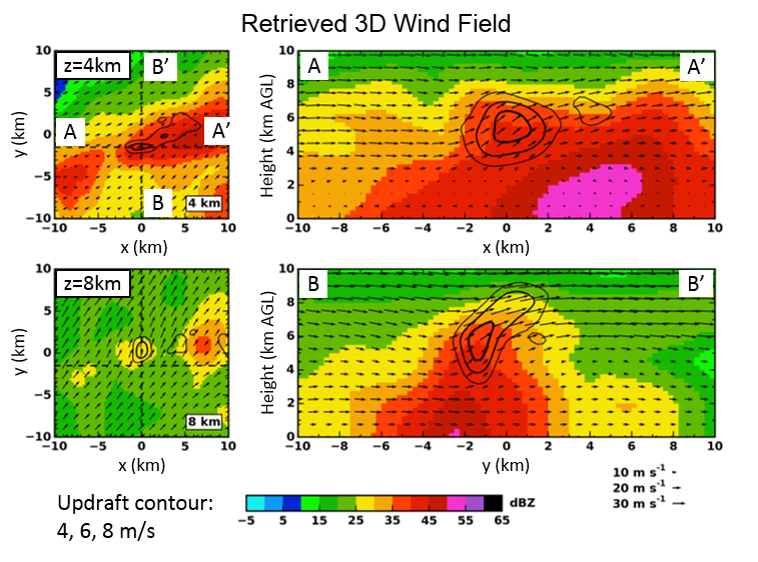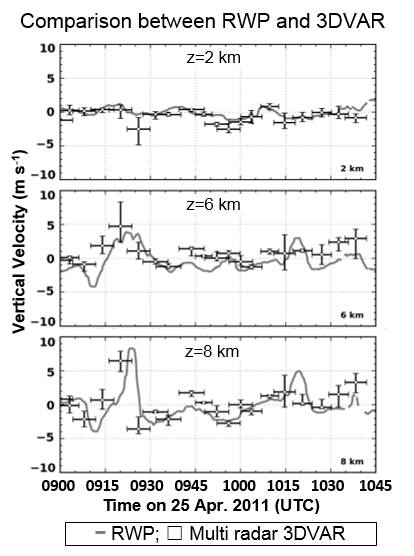Probing vertical air motions in deep convective clouds using ARM radar observations
Submitter:
Kollias, Pavlos — Stony Brook University
Oue, Mariko — Stony Brook University
Area of research:
Vertical Velocity
Journal Reference:
Science
Deep convective clouds contribute to Earth’s hydrological cycle and the vertical transport of energy, moisture, and mass from near the Earth’s surface to the upper troposphere. The vertical motions in these clouds regulate precipitation amount, intensity, and associated cloudiness; however, despite the fundamental importance of these vertical motions, they are challenging to observe. An advanced technique for retrieving 3D vertical winds from radar measurements is evaluated for the first time in comparison with complementary radar observations, with close agreement being found.
Impact
The advanced technique provides a robust, stable solution for 3D vertical winds in cases for which traditional techniques have difficulty. The ARM Research Facility's Southern Great Plains (SGP) radar network provides unprecedented radar capabilities for retrieving 3D vertical wind fields in deep convective events, thus accelerating our understanding of the dynamical and microphysical processes of deep convective clouds and providing robust observational targets for evaluating cloud-resolving simulations.
Summary
The radars at the ARM Research Facility's SGP observatory include several precipitation-probing scanning and profiling weather radars that operate as a network and thus provide state-of-the-art measurement capabilities in deep convective clouds. Complementary radar measurements are also provided by the National Weather Service’s Next-Generation Weather Radars (NEXRAD). A team of scientists combined the information of the radar Doppler velocity measurements from all these radars in a multi-Doppler data assimilation technique using a 3D variational (3DVAR) algorithm. The aim is to retrieve the best estimate of the 3D air motions in deep convective clouds that best matches all of the multi-Doppler radar observations. The 3DVAR technique was applied to several deep convective cloud events observed during the Mid-Latitude Continental Convective Cloud Experiment (MC3E, https://www.arm.gov/research/campaigns/sgp2011midlatcloud), a joint field program between ARM and the National Aeronautics and Space Administration. For the first time, a direct evaluation is performed of retrieved 3D vertical air velocities with those from collocated, vertically pointing radar wind profilers. The retrieved vertical velocity is well matched with that from the radar wind profilers at each height. An analysis comparing this result with that from a traditional integration technique suggests that the 3DVAR technique provides a robust, stable solution for cases in which traditional integration techniques have difficulty satisfying velocity observations and a mass continuity equation simultaneously.



